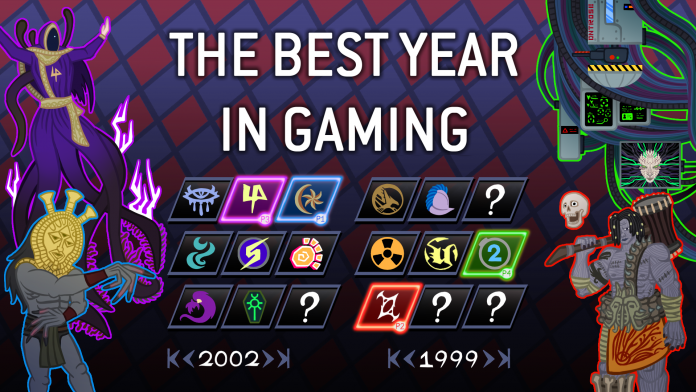Last year’s stacked lineup of games for the Game Awards had us thinking: What was the best year in gaming? As part of our series on determining gaming’s best year, we’re putting together an article on each year, charting the major releases and developments of the year, and talking about both their impact and what made them great.

The Year: 2013
2013 held a lot of promise for gamers. Sony and Microsoft had promised the release of their new consoles in time for Christmas, a huge event in any year. Adding to that, Rockstar was going to release Grand Theft Auto V (for PlayStation 3 and Xbox 360 first, then the new consoles the year after).
In the real world, Barack Obama was sworn in for his second term as the first Black president of the USA. Edward Snowden leaked government documents, starting an entire saga that went on for years. Frozen hit theaters in November, creating an identity for lots of Disney Adults and entertaining kids everywhere.

Disney Infinity Hops on the Interactive Toys Wagon
Toys for Bob’s 2011 title Skylanders: Spyro’s Adventure was a 3D action platformer with a novel concept: A video game connected to physical toys, with the ability to play as your action figures in the game. The original game launched with a series of 32 characters who could be brought into the game via the “Portal of Power,” an NFC tag reader which connected to your console or PC. The idea was everything you wanted as a kid: Buy a toy, play with it in real life, then kick butt with it in a video game. The game was an immediate success, topping sales charts in North America and Europe, and helping to bridge the gap between physical and digital toys in a way that hadn’t been done yet.
Things got serious when Disney joined the fray with Disney Infinity, a similar figurines-to-video game product featuring characters from hit Disney films as well as Marvel properties (and, eventually, Star Wars). The original game for Infinity is more of a sandbox style game than a platformer, though the elements are there to build your own games and hop into pre-built worlds based on the characters you’ve brought into the game. Infinity figures were large, colorful, and, most of all – durable. They’re wonderful collector’s items. The game itself, though? Not that great, and that’s probably why it wasn’t as successful as Disney had hoped.
One year later Nintendo would hop in as well with their own series: Nintendo Amiibo.
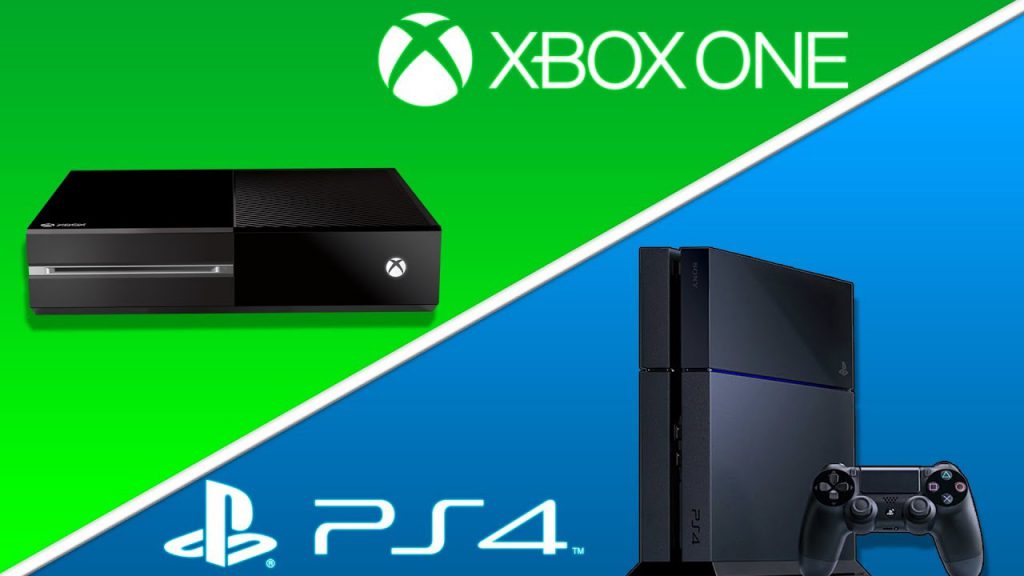
Sony and Microsoft Kick off the Eighth Generation of Consoles
2013 was a blockbuster year for home entertainment consoles. The prior generation was one of the longest in video game history: The PlayStation 3 was seven years old and the Xbox 360 was 8 years old by the time their successors were announced, far longer than prior generations in which the time between consoles was only 4-5 years. Players were ready for new consoles with cutting edge graphics, more techy controllers, and better online services – and Nintendo’s Wii U released the prior year was definitely not what they were looking for. Sony’s PlayStation 4 released on November 15, 2013 at $399 while the Xbox One released a week later at $499. Both consoles became almost ubiquitous for gamers of the time with huge AAA releases every year.
That price point, announced earlier that year during E3, was a major coup for Sony and would ultimately lead to the PlayStation 4 beating the Xbox One in sales. For the Xbox One, Microsoft took some big gambles; of these the most harmful was betting big on motion and voice controls with its Kinect add-on, which was packed with the console at launch and the reason for the higher price tag. The Kinect had some interesting applications – chief among them giving the Xbox One the ability to turn other devices on and off – but ultimately voice and motion controls for games were on their way out of style and were at best a novelty in the console’s launch games. More successful for Microsoft was the way the Xbox One was designed to be a media hub, with pass-through video and TV guide features and a dashboard that was easy to use.
Microsoft was also hammered initially on their strategy for online play. The Xbox One was announced with the requirement that it always be connected to the internet in order to play games and use apps, with potential DRM on physical copies of games to prevent sharing. This went over like a lead balloon with gamers, and Sony rightfully got to make fun of them over it. That said, a year later everyone would just accept that consoles require an internet connection to use at all and we’re pretty close to removing physical media from the ecosystem altogether. Microsoft were in many ways ahead of their time with the console – though note that isn’t necessarily a good thing.
Neither console launched backward compatibility with old games out of the box. Though Microsoft would end up launching very robust support for backward compatibility, the initial plan was that you’d re-buy your old games as downloads through online services – PSN or Xbox Live. The Xbox One would eventually overcome its disastrous initial launch thanks in part to some strong software offerings – specifically backward compatibility and Game Pass – but the PlayStation 4 would put Sony back on top, nearly doubling the Xbox One’s console sales (nobody in Japan buys an Xbox).
Cloud Computing Comes to Gaming
One of the more interesting tech developments of 2013 was the advent of cloud computing. Cloud computing is essentially a means of offering computing power and data storage over the internet, allowing devices like consoles to punch above their weight, or to deliver games via streaming. Originally Microsoft pitched this as more the former (this was one reason for the Xbox One to require an internet connection all the time, though it was absolutely linked to Microsoft’s Azure being a cloud computing solution) – and some games like Crackdown 3 and Forza Horizon made solid use of it – but the bigger application was in cloud gaming, and both Microsoft and Sony would roll out streaming game services by the end of the eighth console generation.

Grand Theft Auto V
Possibly the biggest game to ever hit the market, Grand Theft Auto V followed five years after we all helped Niko make a new life in Liberty City as a hardened criminal. Instead of following one character, the player plays through missions as one of three: psychopath Canadian criminal Trevor Phillips (voiced by the amazing Steven Ogg), gangbanger Franklin Clinton, or FBI snitch Michael de Santa. The game starts with an unforgettable heist scenario ending in a massive shootout that sets up the entire plot.
Grand Theft Auto V crushed sales records when it released – it made a billion dollars in its first three days on the market – and it’s the second-best-selling game of all time, behind only Minecraft. To this day the game is still heavily supported as a live service title by Rockstar (while Red Dead 2 online languishes) and a successor has been announced for 2025.
Grand Theft Auto Online
TheChirurgeon: One month after Rockstar rolled out Grand Theft Auto V they rolled out Grand Theft Auto Online for the PS3 and Xbox 360, giving players who wanted GTA-style violence in a persistent world everything they’d always dreamed of. GTA:Online is set in the same world as and takes place before the events of GTA V. It’s a game which combines the game play and open world of GTAV with a near limitless supply of new things to do and vehicles to drive.
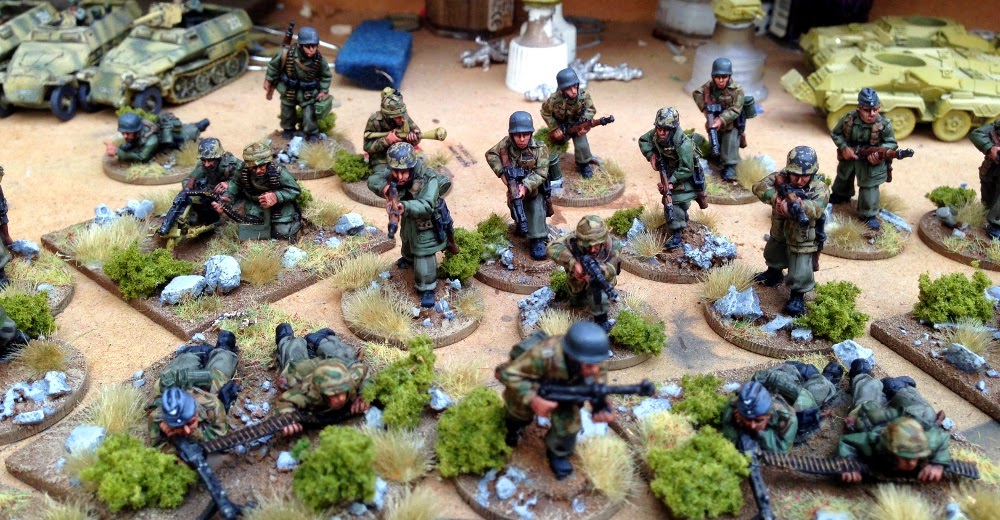
Chain of Command – Too Fat Lardies
Play the period – not the rule; TFL’s mission statement comes through massively in their flagship WW2 ruleset for the tabletop. To me, CoC is TFL’s first ruleset for the mass market – earlier rules were definitely great and designed well but the team got their graphic design chops with CoC.
As a platoon-level WW2 game, CoC shines in scenario play and especially campaign play. There are tons of Pint Sized Campaigns out there for the most niche actions in the war. It’s super easy to watch a movie or tv show and come up with asymmetric scenarios that still play great – because one side might know they’re going to lose troops, but their goal is to move a truck off the board or lose as few troops as possible in a staged retreat.
The rules really show out when you consider how WW2 tactics evolved around the machine gun team and rifles supporting them, smoke, limiting line of sight, and suppressing fire. CoC is one of the most well-loved historical rulesets out there, even ten years on.
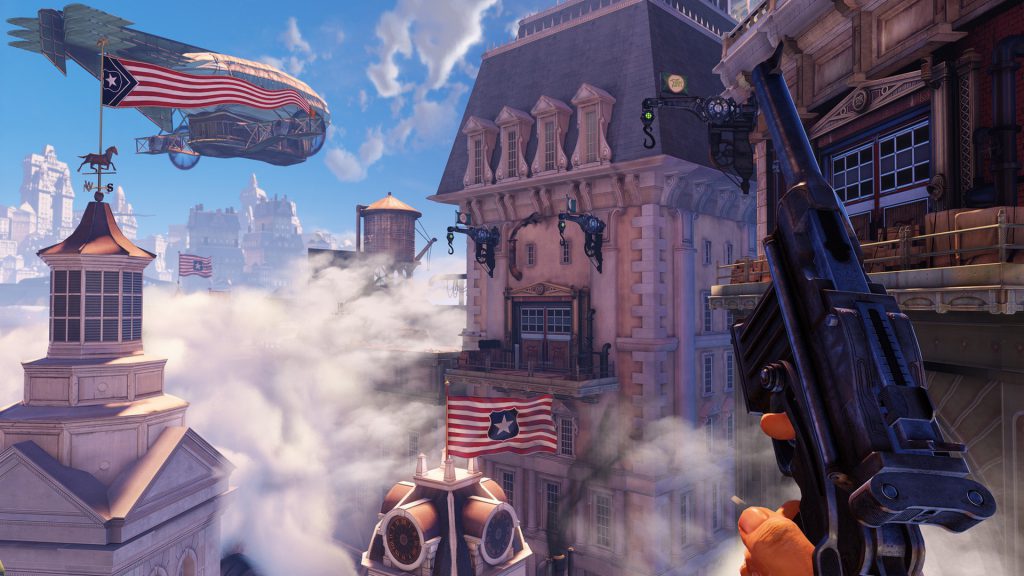
BioShock Infinite
BioShock, originally released in 2007, was a revelation for me. It was like going back to Half Life 1 on release day – lots of new elements to a first person shooter that made the game so much more interesting (and scarier). BioShock 2 built on that, and BioShock Infinite capped it off. The tone of BioShock Infinite is much different from its predecessors – the game is no longer set in the horror-themed sunken ruins of Rapture but instead in the brightly lit flying city of Columbia. In a year with some mega-blockbuster games, BioShock Infinite placed third in most game award categories for game of the year – but scored well in most reviews and is definitely considered one of the best games of the 2010s.
TheChirurgeon: Bioshock Infinite leaves a complicated legacy – it hasn’t aged well, particularly with regard to its politics, but it’s still narratively compelling, and the first half is downright amazing, while things pick up again at the end. Mechanically it’s one of the only games that manages to make an hours-long escort quest actually work and not feel like a slog. It’s a very easy game to get caught up in and enjoy, so long as you don’t give its plot or politics more thought.
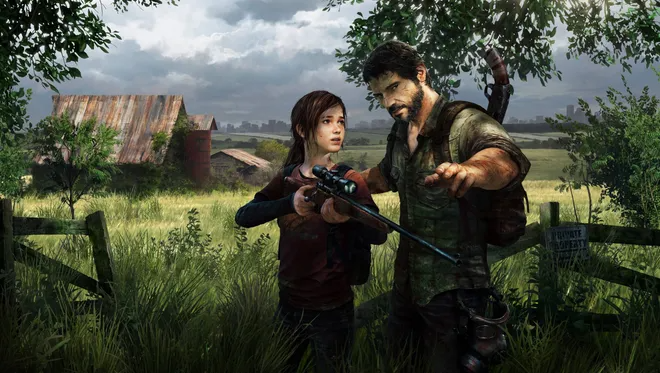
The Last of Us
Considered by many to be one of the very best video games ever made, The Last of Us was created by Naughty Dog, the studio that brought us Crash Bandicoot and more recently, the blockbuster franchise Uncharted. TLOU deserves humongous praise for a very compelling storyline and one of the best soundtracks ever. Along with that, the stealth gameplay innovated the genre with Listen mode and brought us new and notorious enemies like the Clicker.
The story cannot be undersold – Joel and Ellie became so important to players that when TLOU 2 released and something major happened to one of them, the biggest video game shitstorm hit like a wicked nor’easter. It’s a zombie story but bends a ton of the tropes to make it very interesting, starting with the cordyceps that infect people and mutate them.
Again – in a year with GTAV it’s easy to overlook games, but TLOU stands alone in the stealth-horror genre because of story, soundtrack, and innovative stealth mechanics.
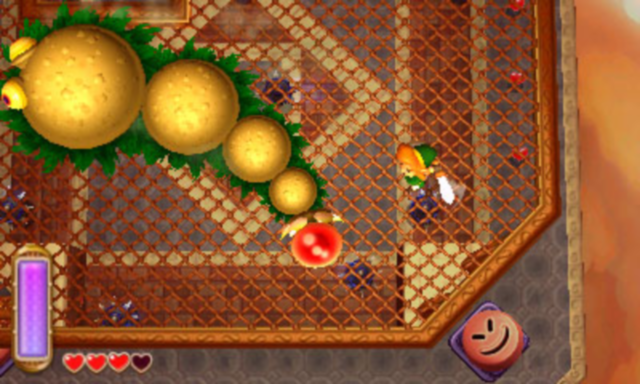
The Legend of Zelda: A Link Between Worlds
The 17th(!) game in the Zelda series, this one came out for the 3DS – that little workhorse that you used to use during commutes or downtime at home. A Link Between Worlds is set in the same world as A Link To the Past, with a few key features: Link can go 2D and merge into walls, like a painting, to avoid enemies and get to places he couldn’t in 3D form; dungeons can be completed in any order; and items can be rented, with the item being returned if the player dies. The rental items idea is in place to avoid the player having to get Item A from Dungeon A to progress in Dungeon B – they can just rent the one they need to get to Dungeon B if they so choose. While the game earned universal acclaim, the art style was a bit divisive for some.
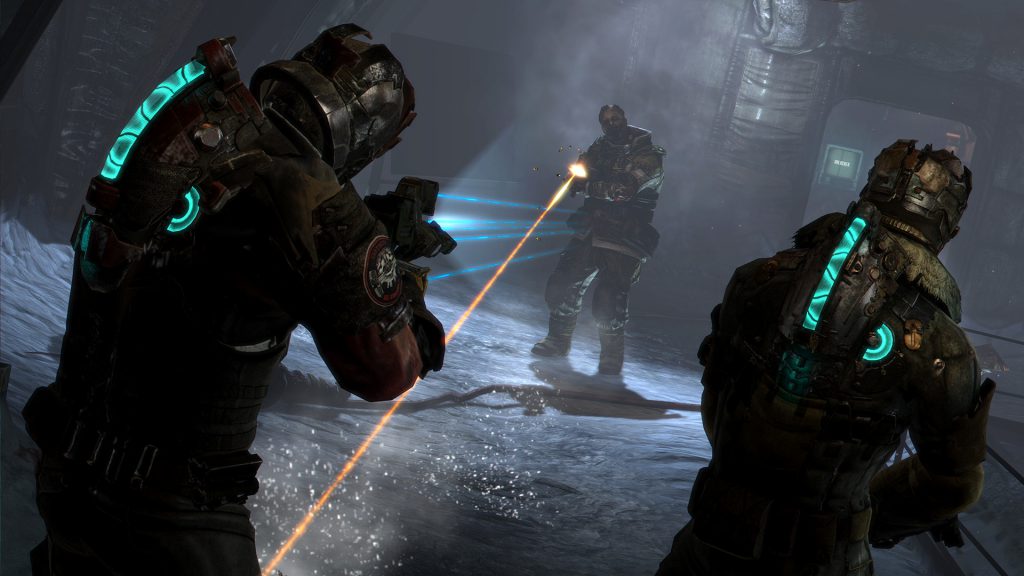
Dead Space 3
With the other blockbuster AAA games coming out in 2013, Dead Space 3 was certainly anticipated as a sequel and the final game in a trilogy – but didn’t jump to the heights that GTAV or TLOU did in terms of critical acclaim, generally scoring 7/10 at most outlets. The game was steered toward more action and less survival horror, adding microtransactions as any game in the early 2010s did. With the lower volume in sales compared to Dead Space 2 and the natural conclusion of the trilogy, the only new release we’ve seen since is a remake of the original Dead Space.
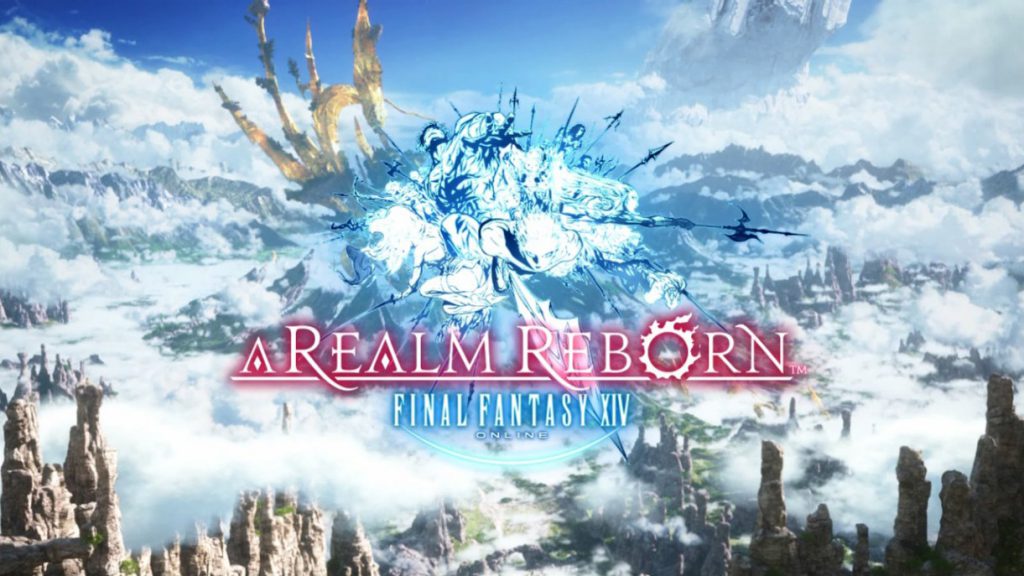
Final Fantasy XIV: A Realm Reborn Saves the Game
TheChirurgeon: The initial release of Square Enix’s second Final Fantasy MMO, Final Fantasy XIV in 2010, was really, really bad. Just a complete disaster. The interface was garbage, the game was laggy, the mechanics were bad, and there was far too much grinding required for everything in the game. It was so bad that Square put an entirely new team on the game and rebuilt it with a new engine, relaunching the game on the PlayStation 3 and Windows in August 2013. The new game was a complete 180 for the game, delivering an experience people actually liked, and in the time since Final Fantasy XIV: A Realm Reborn has become one of the world’s most popular MMORPGs.
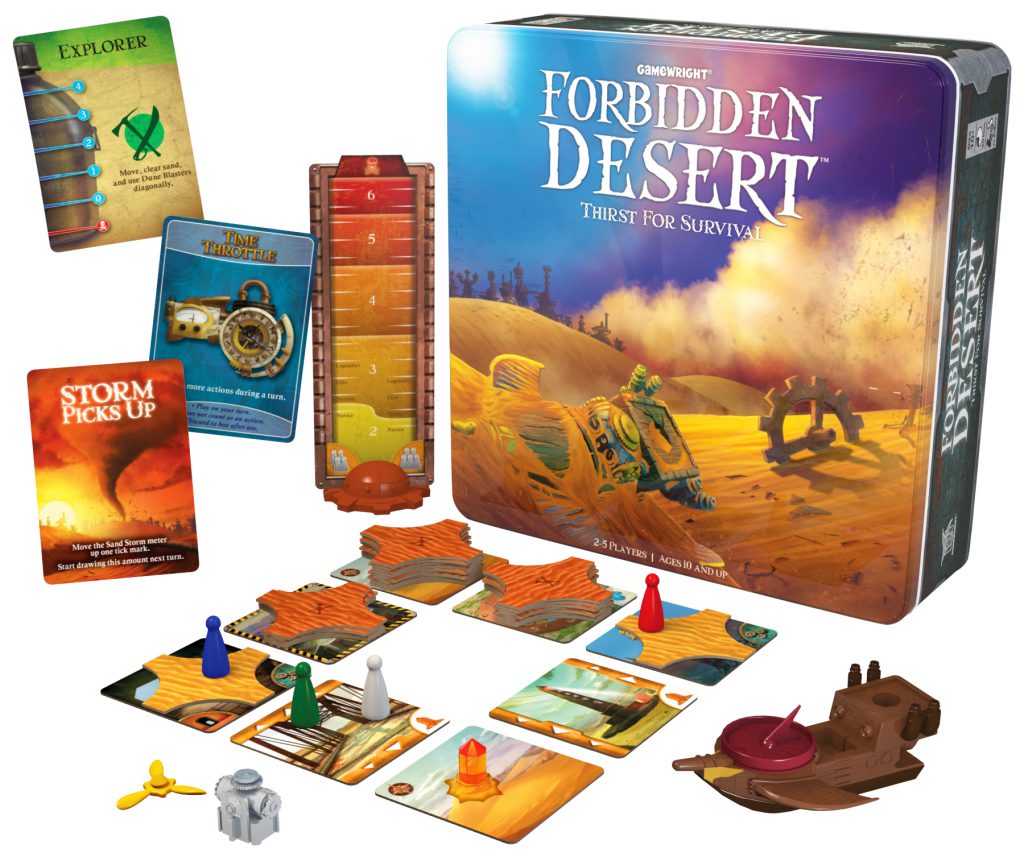
Forbidden Desert
The Sequel to Matt Leacock’s Spiel des Jahres Winner Forbidden Island, Forbidden Desert takes players to a new location with similar dynamics, this time racing a sandstorm while they attempt to navigate the desert, manage their water, and recover ancient technology.
Why It Was the Best Year in Gaming
I truly believe 2013 has a good shot at the #1 spot, even though it is more recent and doesn’t have the rosy glasses effect. The PlayStation 4 and Xbox One were massive releases that many gamers owned at some point or still own, with both consoles shoving huge AAA releases out the door every year.
Chain of Command, while it wouldn’t have the reach that a huge console release has, is a staple WW2 club game and held up as one of the pinnacles of platoon-level wargaming. It is a constant at conventions and TFL keeps churning out great content for it.
Grand Theft Auto V is not only a great game, with solid improvements on the genre and a very compelling story, but also has been kept alive for over ten years by Rockstar. The Last Of Us spawned a franchise that is on TV now; many gamers have teared up at the story and been jump scared by the Clickers.
This article is part of a larger series on the best year in gaming. For more years, click this link. Have any questions or feedback? Drop us a note in the comments below or email us at contact@goonhammer.com.
